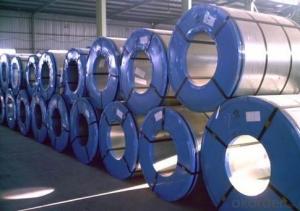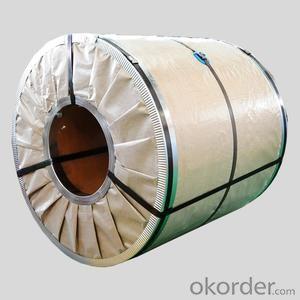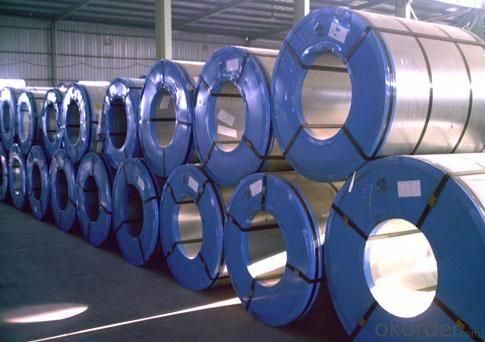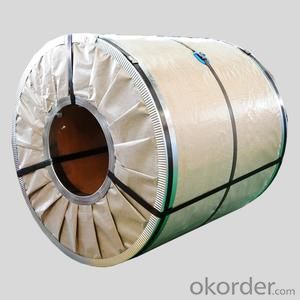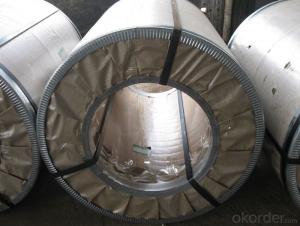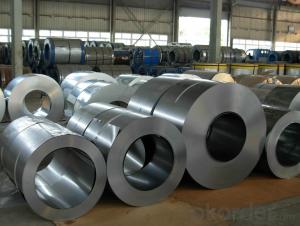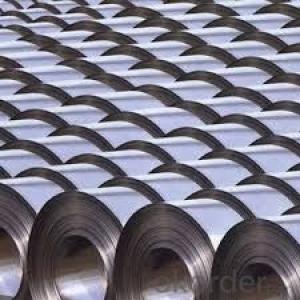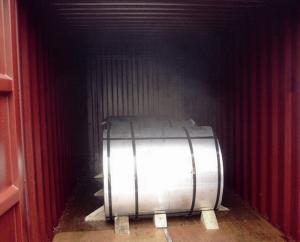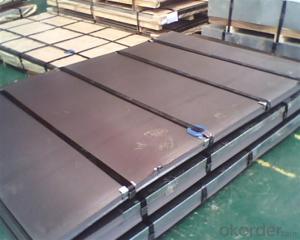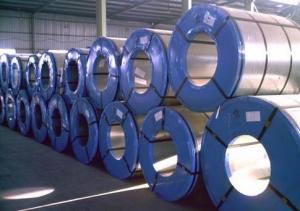Cold Rolled Steel Coil, Jis G3141 Spcc ,CRC, Cold Rolled Steel Dc01
- Loading Port:
- Tianjin
- Payment Terms:
- TT OR LC
- Min Order Qty:
- 50 m.t.
- Supply Capability:
- 10000 m.t./month
OKorder Service Pledge
OKorder Financial Service
You Might Also Like
cold rolled steel coil
Product Description :
| Description | Cold Rolled Steel Coil |
| Product Name | Cold Rolled Steel Coil |
| Specification | 1.0*1219mm |
| Standard | GB,AISI,ASTM,BS,DIN,JIS etc. |
| Material | SPCC,SPHC,SGCC |
| Application | Drums making,building materials,construction,bickle making,etc. |
| Certificates | ISO,BV,SGS |
| MOQ | 20 tons or according to customers’ requirement. |
| Port of Delivery | Tianjin Port of China |
| Remarks | We can provide qualify goods,competitive price and speedy delivery |
COLD ROLLED STEEL COIL
THICKNESS: 0.20mm-1.8mm
WIDTH:1000mm-1250mm
SURFACE: BRIGHT ANNEALED, CUTTING EDGE, MATT FINISH
STANDARD:JIS G 3141 SPCC
COIL ID: 508mm/610mm
COIL WEIGHT:5-10 ton
PACKAGE: COIL TO BE WRAPPED WITH ANTI-RUST PAPER PLUS METAL COVER WORTHY FOR SEA TRANSPORTATION
TERMS OF PAYMENT: 20% ADVANCED PAYMENT BEFORE PRODUCTION,SELLER RELEASE THE SHIPPING DOCUMENTS AFTER RECEIPT BUYER’S 80% PAYMENT
LABEL INFORMATION:As per customer's request.
Our advantage :
1. Expertise:
10 years of manufacture: we know how to properly handle every step of production.
2. Competitive price:
We produce resin and paint by ourself, which greatly reduce our cost!
3. Accuracy:
We have a technician team of 40 people and a QC team of 30 poeple, ensure our products is exactly what you want.
4. Materials:
All color Steel Sheets are made of high-quality raw materials.
5.Certificate:
Our products are certified by TUV, ISO9001:2008,ISO14001:2004 etc.
6. Productivity:
We have three large-scale production line, to guarantee all your orders will be finished in earlist time
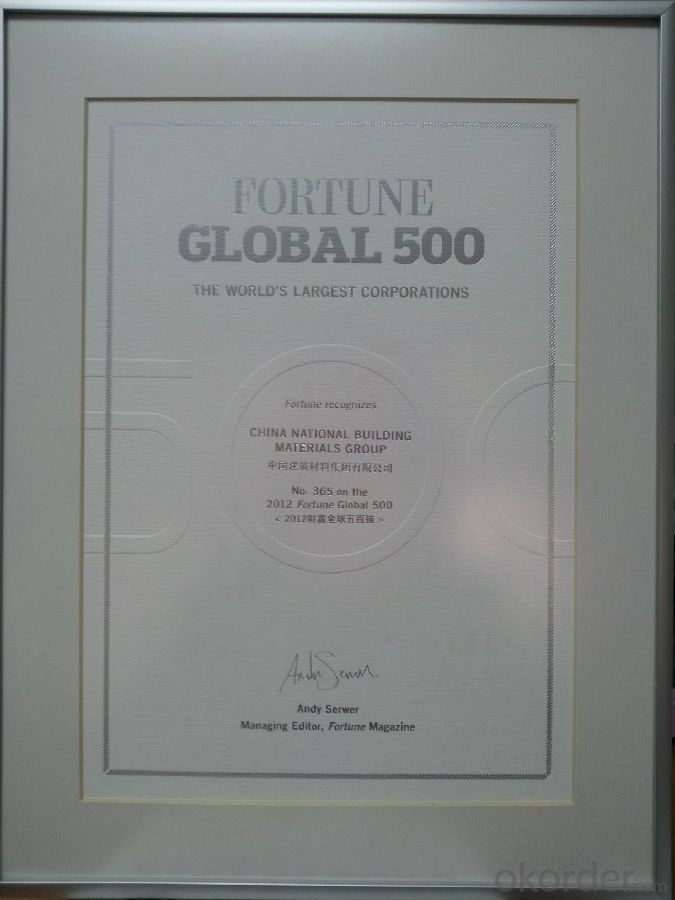
- Q: I understand that damascus sword steel was made by folding the strip of steele double , reheating, hammering, folding again and so forth hundreds of times. Was this the same or very nearly the same techmique the japs used making the sword blades the samari swords?(forgive the misspelling)
- Actualy, the secrets of forging Damascus steel has been rediscovered. In the 1970s, a Russian scientist found that he could duplicate the steel found in old Damascene swords. While it is true that such swords (which have to be made by hand) would be more expensive than usual, you must keep in mind that the majority of Damascus swords are still forged in Damascus. Syria is a highly inexpensive country, and the price of a Damascus blade, while being expensive to Syrians, would be cheap to Westerners. In reference to your question about wether there is anything special about Damascus steel, the answer is yes. At the time of its creation, Damascus steel was the lightest and most flexiable metal known to man, even lighter than the steel Katana swords used by the Samurai of Japan. During the Crusades, Europeans reported that the Arab blades were capable of bending in the wind, and floating on water. While these are certainly exaggerations, they are proof that Damascus blades were far lighter and stronger than the crude iron weapons used by the Crusaders.
- Q: I looking at replacing a few of the panels on my car with either Carbon Fiber or High Tensile Steel to shave off some weight and increase mpg and take some time off my quarter mile. Which is better: Carbon Fiber or High Tensile Steel?
- Steel is much cheaper to buy, but weighs more than the carbon fiber and is not as strong as a rule. To save weight on a race car go with carbon fiber. To save weight (money) on the wallet go with steel.
- Q: How are steel coils recycled?
- Steel coils are recycled by first being collected and transported to a recycling facility. They are then processed to remove any impurities or contaminants, such as coatings or oils. The coils are then shredded into smaller pieces and melted down in a furnace. The molten steel is then molded into new coils or other steel products, ready to be used again in manufacturing processes.
- Q: What are the common challenges in steel coil manufacturing?
- Some common challenges in steel coil manufacturing include maintaining consistent quality, managing the weight and size of coils, ensuring proper surface finish, minimizing defects such as dents or scratches, preventing coil damage during handling or transportation, and optimizing production efficiency to meet customer demands.
- Q: What are the different types of steel coil surface finishes for aesthetics?
- There are several different types of steel coil surface finishes that are commonly used for aesthetics purposes. These finishes are applied to the surface of the steel coil to enhance its appearance and provide a desired aesthetic appeal. Some of the most popular types of steel coil surface finishes include: 1. Polished Finish: This type of finish involves using abrasive materials to create a smooth and reflective surface on the steel coil. It provides a high-gloss look and can be further enhanced by using different levels of polishing. 2. Satin Finish: Also known as brushed finish, this type of surface finish involves using a fine abrasive material to create a soft and matte appearance on the steel coil. It provides a subtle sheen and a textured effect. 3. Etched Finish: This finish involves using a chemical process to create patterns or designs on the surface of the steel coil. It can be used to create intricate and decorative designs, making it a popular choice for architectural applications. 4. Embossed Finish: This type of finish involves pressing or stamping a pattern onto the surface of the steel coil. It creates a raised design that adds texture and visual interest to the steel coil. 5. Powder Coated Finish: In this finish, a dry powder is applied to the steel coil and then heated to form a protective and decorative coating. It is available in a wide range of colors and provides a durable and vibrant finish. 6. Painted Finish: This type of finish involves applying a layer of paint to the surface of the steel coil. It allows for customization in terms of color and provides protection against corrosion and other environmental factors. These are just a few examples of the different types of steel coil surface finishes available for aesthetic purposes. Each finish offers a unique look and can be selected based on individual preferences and project requirements.
- Q: How are steel coils used in the production of steel beams?
- Steel coils are an essential component in the production of steel beams. These coils are typically made by hot rolling steel strips in a continuous process. The coils are then sent to a steel beam manufacturing facility to be further processed. Firstly, the steel coils are uncoiled and flattened to obtain a flat surface. This ensures the uniformity of the beam's dimensions and improves the overall quality. The uncoiling process involves feeding the coil through a series of rollers, which gradually unroll the steel strip. Once the steel strip is uncoiled, it is then cut into specific lengths, depending on the desired size of the steel beams. This cutting process is typically done using automated machines, which ensure precision and accuracy. Next, the cut steel strips are shaped into the desired profile of the steel beams. This is achieved through a process called roll forming, where the steel strip is passed through a series of rollers that gradually bend and shape it into the required shape. The roll forming process can create various types of steel beams, such as I-beams, H-beams, and U-beams, depending on the design and structural requirements. After the roll forming process, the steel beams undergo further finishing operations, such as straightening, welding, and surface treatment. Straightening ensures that the beams are perfectly aligned and free from any deformations. Welding is performed to join different sections of the beams together, ensuring their structural integrity. Lastly, the beams are surface treated, usually through processes like shot blasting or painting, to protect them from corrosion and enhance their appearance. In summary, steel coils play a crucial role in the production of steel beams. They provide the raw material that is uncoiled, cut, shaped, and further processed to create high-quality steel beams. These beams are widely used in various construction projects, ranging from buildings and bridges to industrial structures, making them an essential component in the construction industry.
- Q: What are the different types of steel coil handling attachments?
- Some of the different types of steel coil handling attachments include coil lifters, coil grabs, coil hooks, coil tongs, and coil C-hooks. These attachments are designed to safely lift, transport, and manipulate steel coils of various sizes and weights.
- Q: What are the dimensions of steel coils used in the mining equipment industry?
- The dimensions of steel coils utilized in the mining equipment sector may differ depending on the particular application and demands. Nevertheless, there are frequently employed standard dimensions. Typically, the width of steel coils used in the mining equipment industry can range from 600mm to over 2000mm. This allows for adaptability in the manufacturing process and guarantees that the coils can be customized to fit different equipment sizes and specifications. Regarding thickness, steel coils employed in mining equipment can range from 1.5mm to 20mm or more. The specific thickness is determined by factors such as equipment type, intended usage, and required durability level. The length of steel coils used in the mining equipment industry can also vary, but usually falls within the range of 1000mm to 6000mm. Once again, this offers flexibility in the manufacturing process and ensures that the coils can be cut to suit the exact requirements of the equipment being produced. It is essential to acknowledge that these dimensions are not fixed and can be tailored to meet the specific needs of the mining equipment sector. Manufacturers and suppliers in the industry can often provide coils in different sizes and dimensions to accommodate the wide array of equipment used in mining operations.
- Q: We have a stain from a pot or bowl in our new expensive stainless steel sink. It looks like a water mark that happens when you leave a glass on a table without a coaster. It's a mark in the shape of the bowl or pot that was there. We left it there overnight:( It's not rust either. Help!
- Do Not use anything abrasives. You will have problems forever if you do. That will ruin the finish. BarKeeper's Friend has been a life saver for me for the cheap sink that was put into my place. Was shocked that it made my sink almost look new again.
Send your message to us
Cold Rolled Steel Coil, Jis G3141 Spcc ,CRC, Cold Rolled Steel Dc01
- Loading Port:
- Tianjin
- Payment Terms:
- TT OR LC
- Min Order Qty:
- 50 m.t.
- Supply Capability:
- 10000 m.t./month
OKorder Service Pledge
OKorder Financial Service
Similar products
Hot products
Hot Searches
Related keywords
